
It’s not like the Toronto Maple Leafs haven’t created shorthanded chances in the past. Through nearly 30 games last season, the Leafs found themselves first in shorthanded scoring chances in the league, yet dead last in goals generated, with…zero. They’d go on to end the season with three shorties in 56 games, a total which bested all of 10 teams. The puck wasn’t going in, then it was, and that frequency has only picked up since.
Dean Chynoweth was brought on to oversee the Leafs’ penalty kill, which the season before finished 23rd in the NHL with a success rate of 78.5 per cent. This year, they’re a breath out of the top five at 84.4 per cent, but their “net PK” (where goals for cancel out goals against) while short-handed has them second-best in the NHL (behind only Carolina) at a rate of 89.6 per cent.
They get a bump in “net PK” when short-handed because, my lord, do they ever create offence while short-handed — even more so than the season before. Just about every forward on the team is constantly sniffing out turnovers to catch offence-hungry teams leaning the wrong way. Let’s go through the numbers to understand how threatening they are before digging in to why the numbers put their PK near the top of the NHL.
Down a man, the Leafs generate the most shot attempts for per 60 in the NHL:
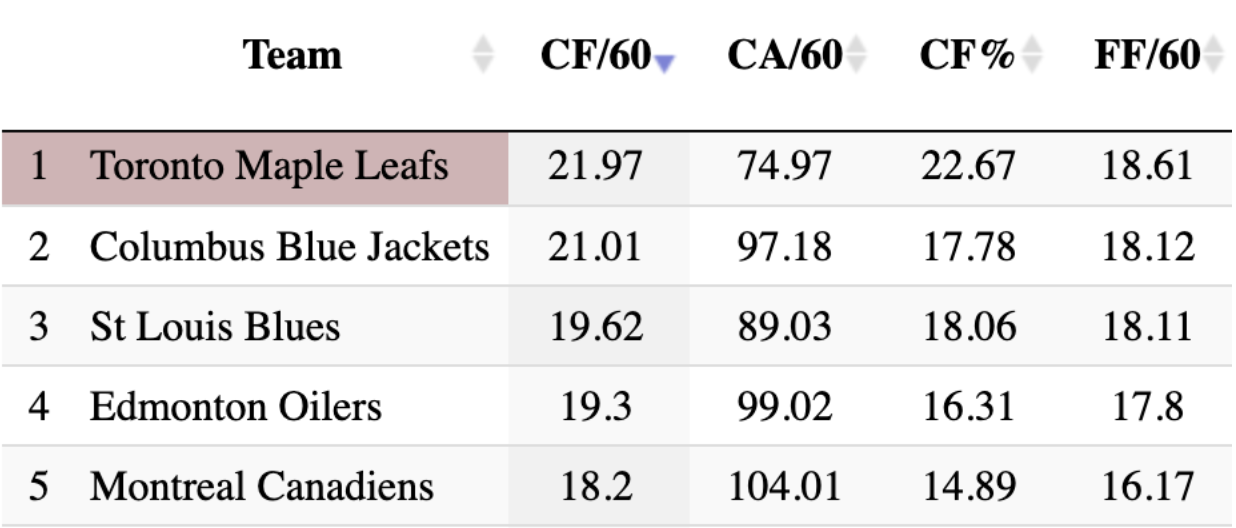
But it’s not just shot attempts. They really separate themselves from everyone else by generating penalty kill chances, creating over two more per 60 than the next best team. They get nearly a quarter of the chances out there when the other team has an extra attacker.
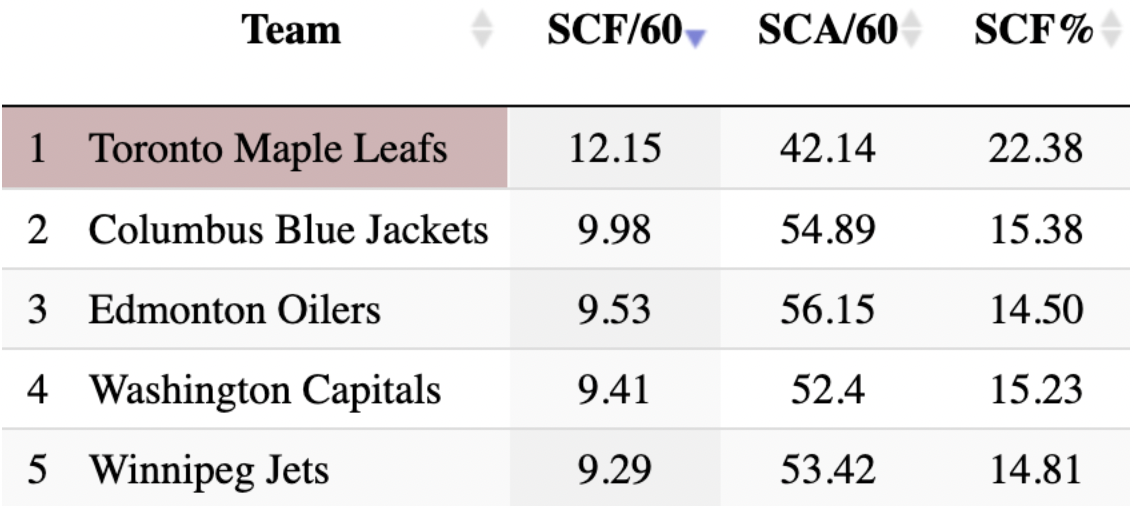
It’s easier to understand in raw totals though — the Leafs have played 47 games this season. They’ve also created 47 scoring chances while short-handed (just assume I mean short-handed from now on so I can stop pointing that out), meaning they’ve had a legit crack at a shorty every night out this season (on average).
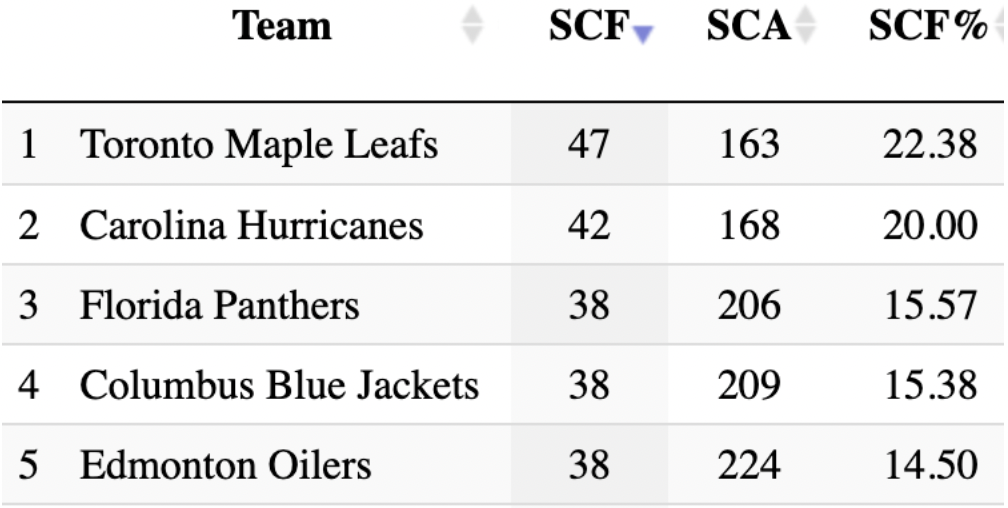
And they’re not just cheeseball chances, they’re first in high danger chances too:
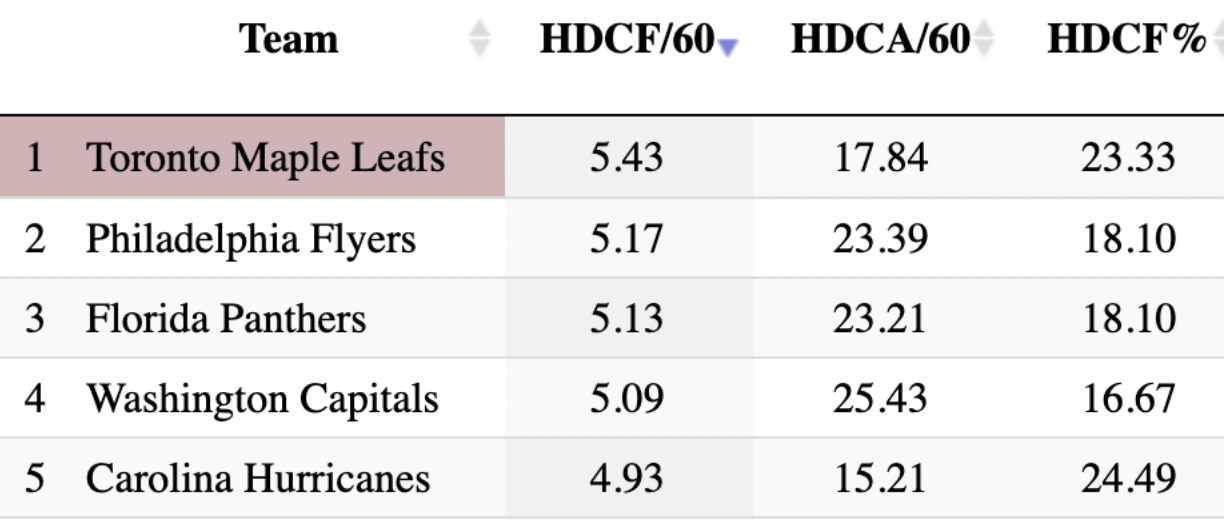
That’s led to the best expected goals for mark in the league.
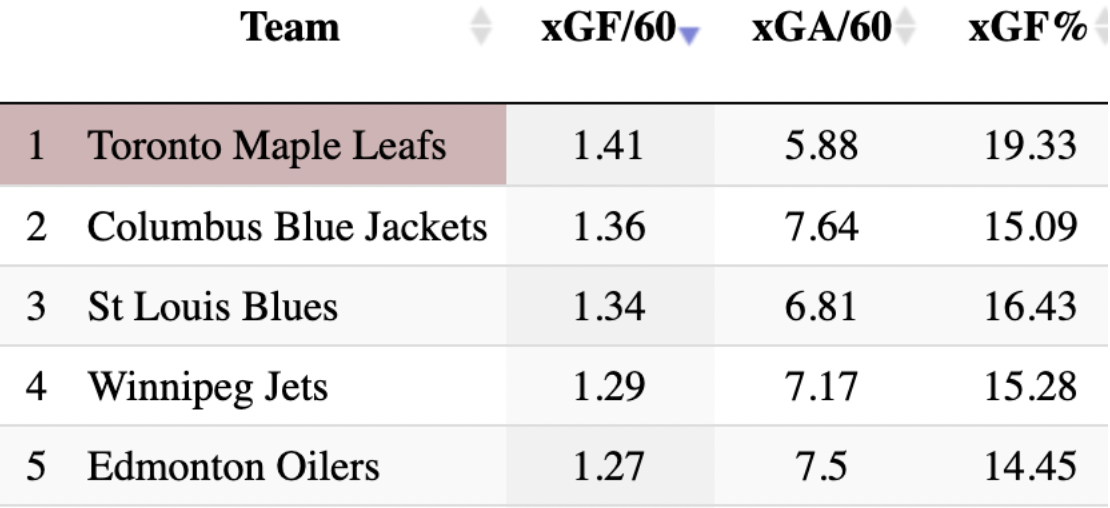
It’s safe to say that their total of seven short-handed goals this season hasn’t been a fluke. We shouldn’t be surprised if they overtake Vegas for first in the NHL here by the end of the season:
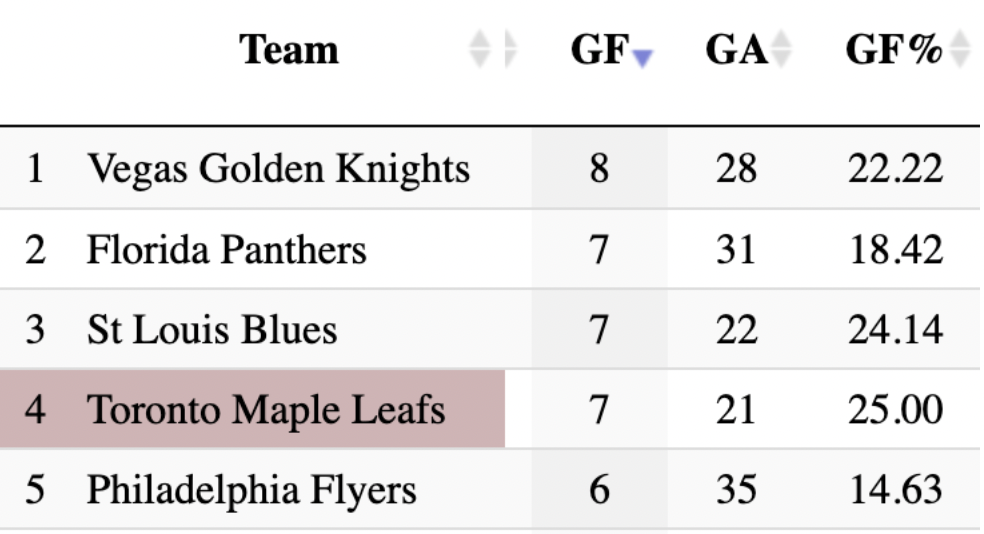
So, who’s doing the creating, first and foremost?
When you create offence short-handed, it’s rarely generated by your defencemen, who are locked into protecting the front of the net and firing pucks down the rink. Having talented PK d-men means you’re more likely to have guys who try to make a play with a loose puck rather than fire it straight down (and the Leafs use Jake Muzzin, Morgan Rielly and TJ Brodie a lot, who can all make good outlet passes), but that’s not really where the Leafs create from.
Their short-handed offence is created by the sniffing and lurking and pushing of the forwards. Here are the guys who do the bulk of the killing up front for the Leafs:
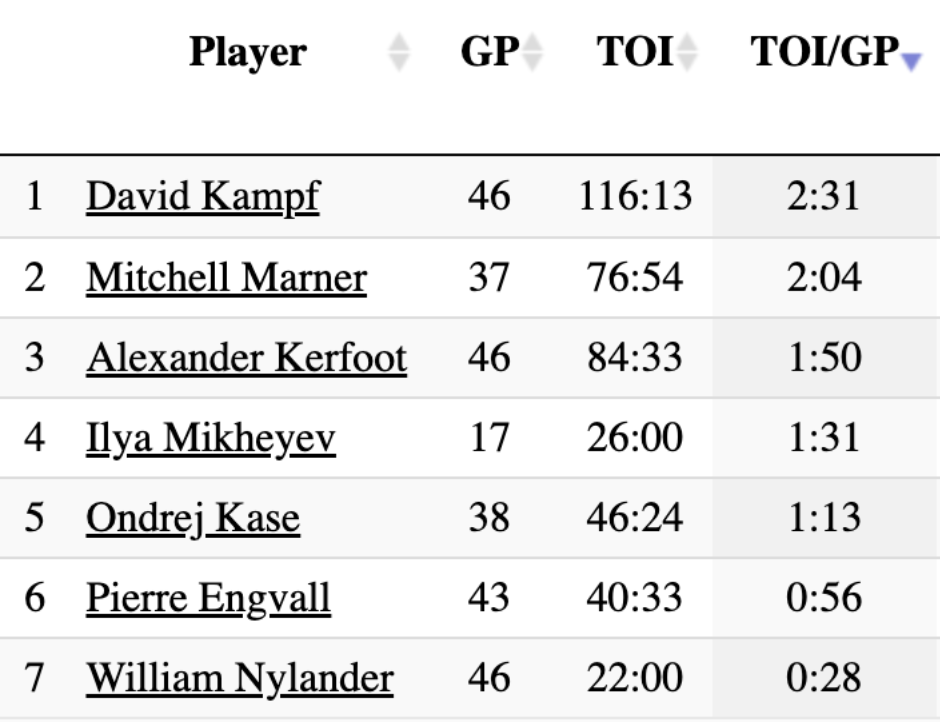
That’s a list of guys who can really skate and, after Kampf (who also skates well), a bunch of guys who love to push for rushes up-ice and challenge the speed of the defence. Despite playing some 10 less games than most of the other guys on the list, Mitch Marner leads the NHL in shorthanded scoring chances with 21. And Alex Kerfoot is right behind him.

What’s crazy is, after being one of the best short-handed creators in hockey last season, Ilya Mikheyev’s gone absolutely bonkers with it through his 17 games so far this season. Everyone else on the list below is between 37-48 games played, but still, tough to overlook how dangerous Mikheyev has been shorthanded by his per-60 rate.
Fun fact: In Mikheyev’s 22 mins of short-handed TOI this season, the Leafs have split scoring chances for/against 50/50 with the opposition.
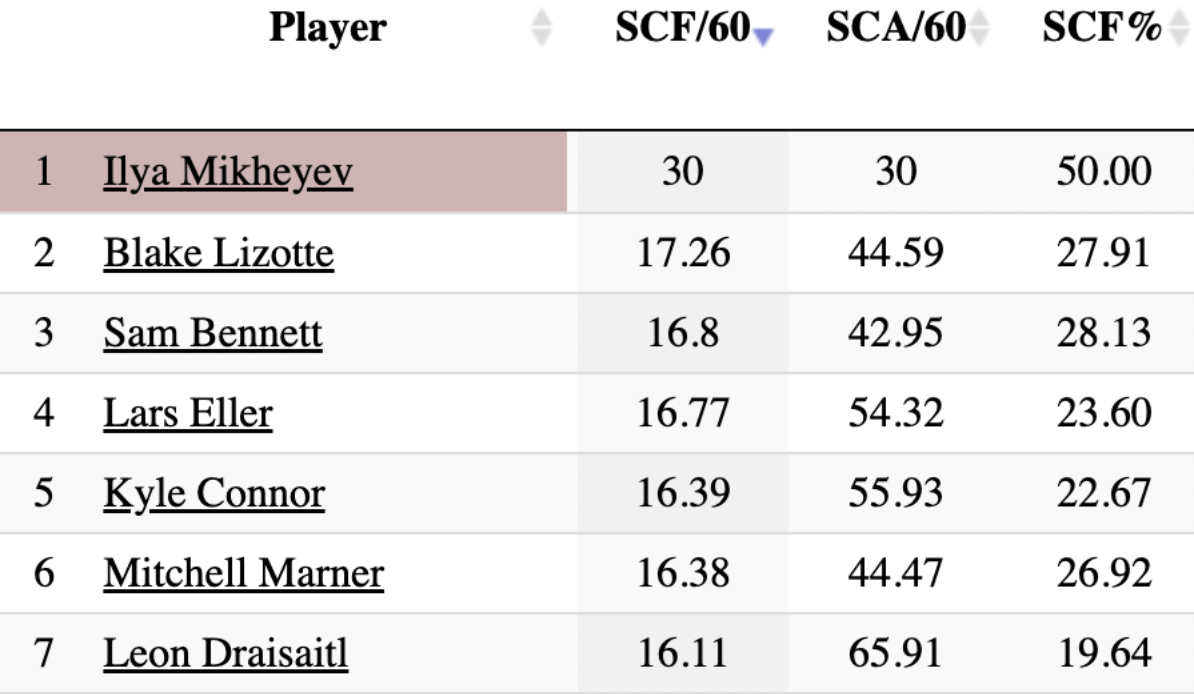
So, what does all this look like off the spreadsheets?
Early in the season, Toronto’s short-handed goals came off some broken plays, a three-on-four where Marner caught the New York Islanders sleeping, and two shorties where the Ottawa Senators appeared to have completely forgotten how to hockey. Those goals weren’t the product of what the Leafs do, so much as a product of poor play by the opposition.
But the trend since has been the “sniffing” I talked about, which to me means that when the opposition is trying to make plays high in the zone and getting a little too cute, the Leafs are aggressively trying to get little tips and disruptions on pucks, with the off-wing player jumping up when that happens. Those players are constantly searching to see if there’s anything there to pounce on, like a dog at your pocket when they know you’ve got treats.
With today’s power-play structures all having a “one” up top (almost every team is in some version of a 1-3-1), any puck disruption can lead to a one-on-one, but with that weak side guy jumping, the Leafs have been great at catching sleepy flank guys who think they’re out there for an offence-only fun shift who don’t exactly sprint back to their net to defend.
Against the Pittsburgh Penguins, the Leafs got a high disruption, and the weak guy — who happened to be Morgan Rielly because of the way they rotated — jumped and created a chance.

The high disruption happened against the Islanders below off a draw where, again, they tried to get too cute while under pressure.

One of the most talked-about two-on-ones in recent Leafs history came about short-handed too (talked about because it was defended so terribly by Damon Severson). The Devils tried to get cute passing through a well-defended seam, and both Leafs jumped.
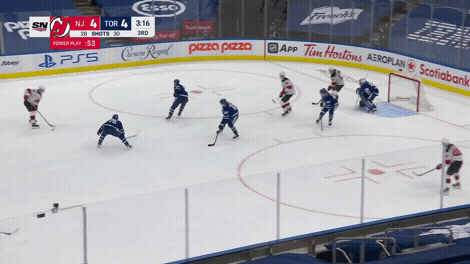
The finish below is what we’ve all been talking about because of Marner’s absolute wizardry, but prior to the nifty slip and finish, it’s Seattle being careless with the puck high in the zone on their PP. You can’t do that against Toronto.

Being dangerous on the PK is useful for a variety of reasons — did you know goals are good? — one of which is developing a reputation which forces PPs to be aware. That basically means their flank guys start to hedge backwards on 50/50 pucks.
Anytime you can make the opposition retreat without having to physically do anything, you’re doing something right. And short-handed, the Leafs are doing a lot right too, forcing the opposition to be perfect or making them pay.





